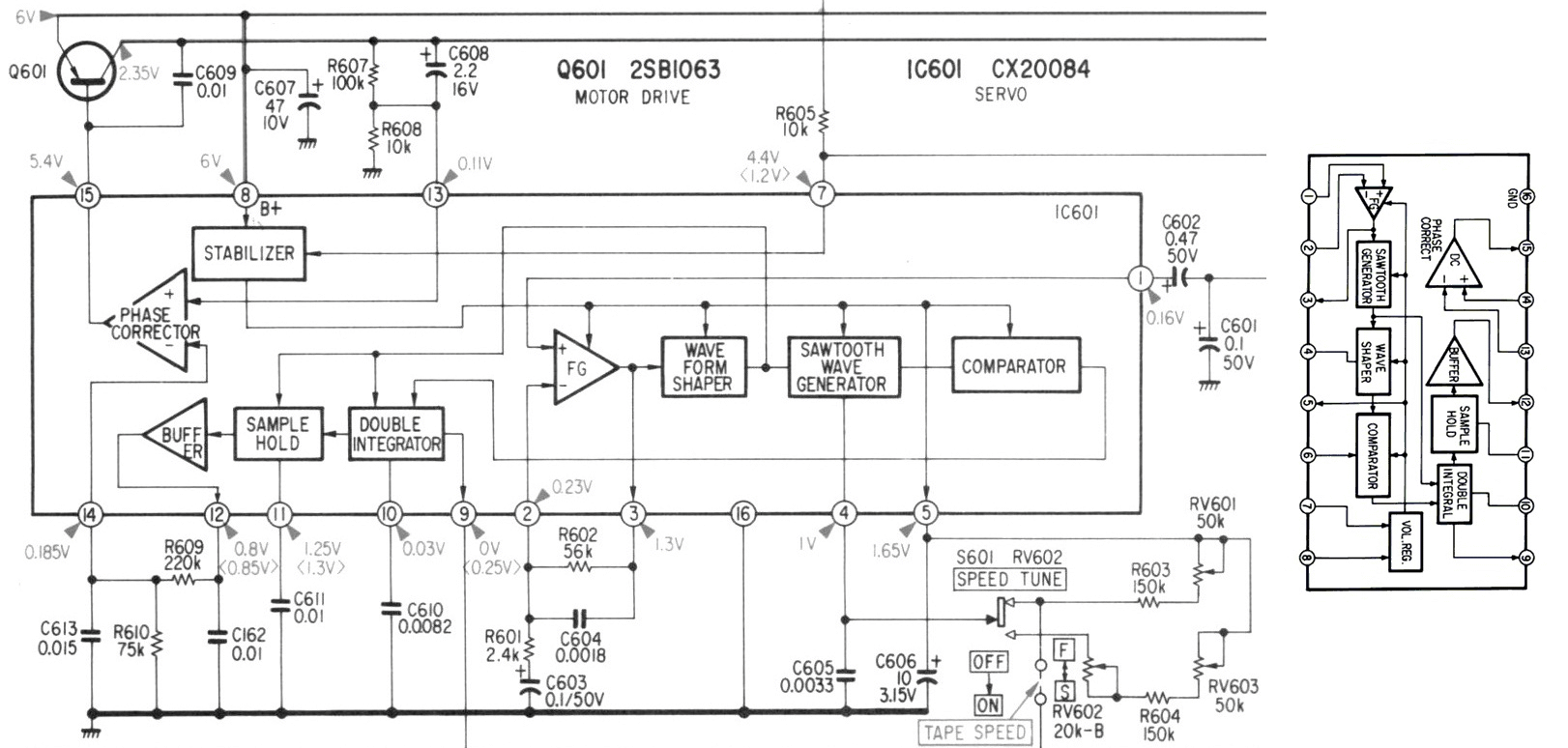Sony WMD6C Repair
If you have a Sony WMD6C that needs repair then this article might help. If your unit has speed issues such as fast speed, or slow speed, or a random variation of speed, or perhaps it is totally dead, then this page might help as we look into the power supply design and servo mechanism of this unit.
Looking at the circuit diagram (above) we can see that the unit accepts +6 V DC through the barrel socket CN301, where the centre pin is negative. This positive rail then splits, where one rail receives power through switch S901, whilst the other rail goes directly to power IC601 (CX20084) servo chip. As you can see, there is absolutely no protection for the CX20084 IC as it is totally exposed to the power rail and whatever the user decides to plug to the unit. Consequently, as you can imagine, simply feeding a high voltage can damage the IC, and also feeding a voltage in reverse polarity can damage this IC. This damage can happen without even switching ON the unit because the power supply rail connects directly to the servo chip. Hence the WMD6C is one unit that you have to be very careful of when connecting a power supply adapter. It is usually a good idea to double check with a meter to ensure that the power is at the correct level and polarity.

At first the power input design seems quite strange as it would have been so much better to include a voltage regulator for overvoltage and reverse polarity protection caused by user misuse, however in this design the voltage regulator is inside the CX20084 IC. This internal block, also known as "stabilizer" receives power through pin 8. Usually servo ICs have internal comparators and reference voltages that rely on precise voltage levels, hence one can imagine that any damage to the voltage regulator block can result in all sorts of speed issues.
In this servo IC, there is also an internal phase corrector, which through pin 15, drives transistor Q601 that controls the power to the motor M901. Usually reverse polarity on Q601 would also destroy it; hence changing the servo chip may not solve the problem as Q601 may require changing as well.
Interestingly, this unit also has a dc-dc converter which produces a 10.8 V rail from a 6 V rail. This converter has no internal protection against reverse voltage or overvoltage, and therefore a high reverse voltage at its input can totally destroy its circuitry.

Replacing the CX20084 is no small job as this is a surface-mounted chip that is smaller than the size of a British one pence coin. In addition, there are also fake ICs from China that one must be aware of; hence replacing this IC is no small job for a beginner. To make a proper job of this, it is vital to have a SMD rework station, as well as the necessary skills working with components this small. However, before rushing into changing this IC it is probably a good idea to do some diagnosis and measure the voltages at its pins, because it is not always the fault of this IC. On occasion IC701 can also fail due to incorrect power supply. This IC provides the crystal oscillator and phase comparator functions, and when it goes faulty, it can behave erratically causing speed issues.
